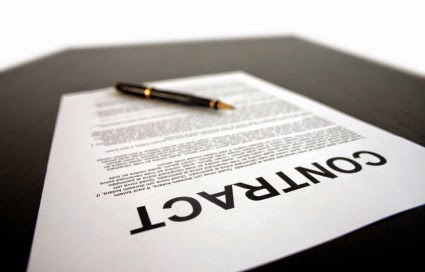1. Conditions of contract
2. Technical Specifications
3. Bill of Quantities or BOQ
4. Contract Drawings
5. Form of contract
Note: Language for all the documents should be exact , so that, later on the meaninings may not be wrongly interpreted.
1. Conditions of Contract
Conditions of contract are classified into three categories.
 |
| Contract Documents |
i) General Conditions of contract
These conditions, in some form, are to be specified for nearly al types of the works. These define generally the terms under which the work is to be carried out like the relationship between the engineers, the contractor and the client, the powers of the engineers and the terms of payments etc. Various clauses dealing with contract laws are incorporated in the general conditions o the contract.
ii) Additional Conditions of the contract
These conditions are related to the type of project. Conditions left in general conditions of contract are specified in additional conditions of contract. These conditions generally differ from project to project and are mainly related with specifications to be used, ways of testing, start of work, and other relevant work.
iii) Special conditions of work
These include some information about the site and the work, provisions of facilities at the site, site office, availability of surveying instruments drawings and site order book (to note instructions from the engineer) at the site, sign boards, materials and machinery issued by the department, advances, and other related terms.
Note: all conditions or circumstances, which can give rise to a dispute later on, should be well settled in the contract agreement. These agreed solutions of various conditions become contract law.
2- Specifications
The specifications amplify (magnify) the information given in the contract drawings and the BOQ. These describe, in detail, the work to be executed under the contract and nature and quality of materials and workmanship. The specifications also give details of any special responsibilities to be borne by the contractor in addition to the general conditions of contract.
The use of a particular standard like British, American, European, etc. helps considerably in this respect. It ensures the use of good quality materials complying with the latest requirements prepared by expert technical committees representing Users, Produces, Research workers and other interested. The practice is to use brief description in BOQ and to give more comprehensive and detailed information concerning the materials
and workmanship etc. in the specifications.
Technical specifications are usually separately mentioned for;
i) Civil works — Different standards
ii) Water Supply, Sewerage and
Sanitary works ( called plumbing works for inside of the building) – Different standards
iii) Electrical installations —-WAPDA specifications
iv) Gas Works —-SUI Northern Gas (Limited Specifications)
Like Us on Facebook!
3- Bill of Quantities
The BOQ consists of a schedule of items of works, to be carried out under the contract, with quantities entered against each item, the quantities being taken in accordance with the standard methods of measurement of civil works.
Subscribe Us on YouTube!
One of the primary functions of a BOQ is to provide a basis on which tenders can be obtained and when it is priced, it provides a comparison of various tenders received.
For a building, BOQs are given separately for each storey and separately for different types of works.
i) BOQ for civil works
ii) BOQ for public health engg. Works
iii) BOQ for electrical works
iv) BOQ for gas works
4- Contract Drawings
Contract drawings illustrate the details and scope of the works to be executed under the contract. They must be prepared in sufficient details to enable the contractor to satisfactorily price the BOQ. The contract drawings will be subsequently used when executing the works and may be supplemental by further detailed drawings as the work proceeds. Full description and explanatory notes should be entered on the drawings to avoid any sort of confusion.
6. Form of Tender (Formal Agreement)
It constitutes a formal offer to execute the contract work in accordance with the various contract documents for the contract price as quoted in BOQ. It usually includes the contract period within which the contractor is to complete the work.
The contractor is generally asked to enter into a bond whereby he provides to sureties who are prepared to pay upto 10-15% of the contract price if the contract is not carried out satisfactorily or a bank guarantee.














